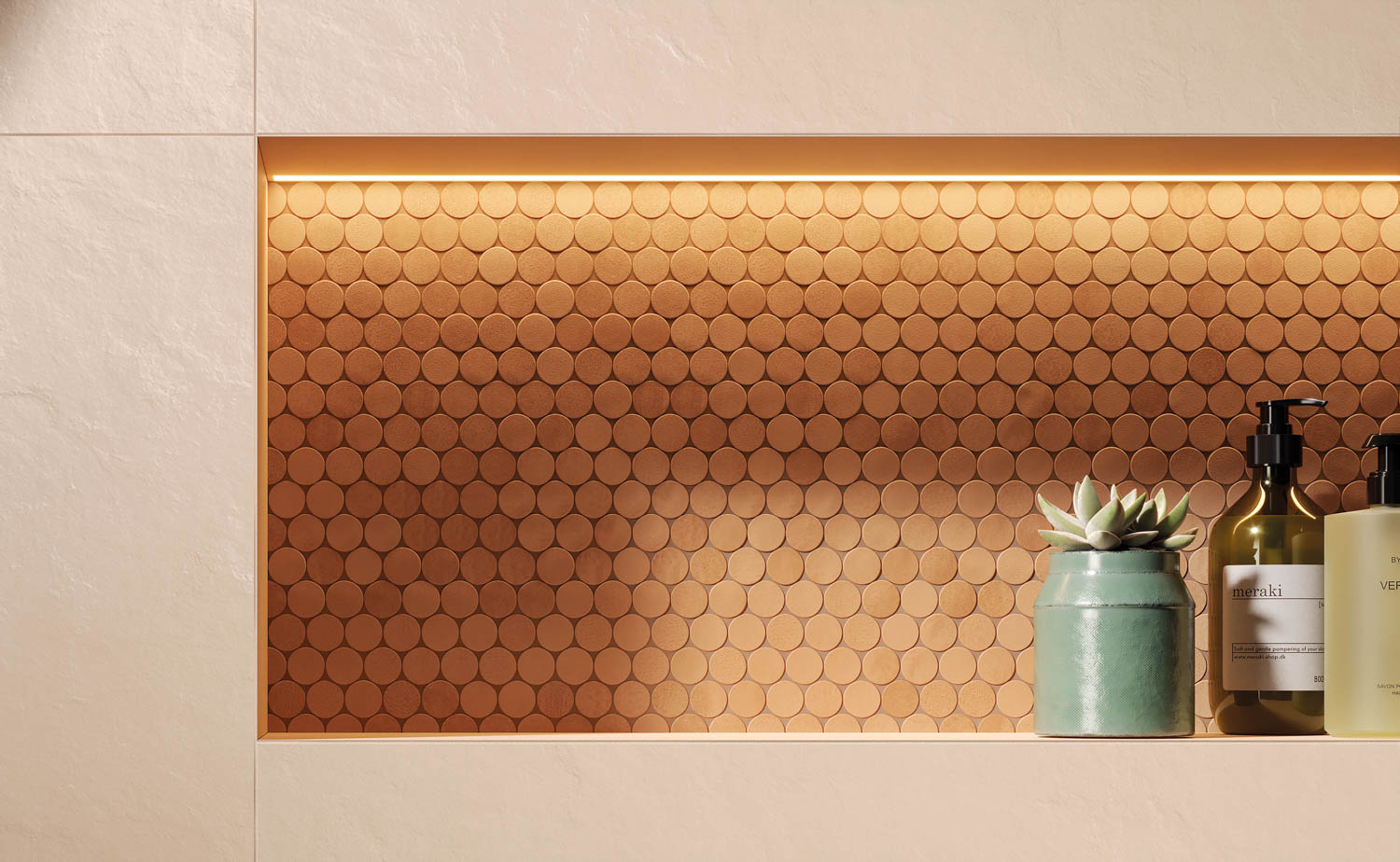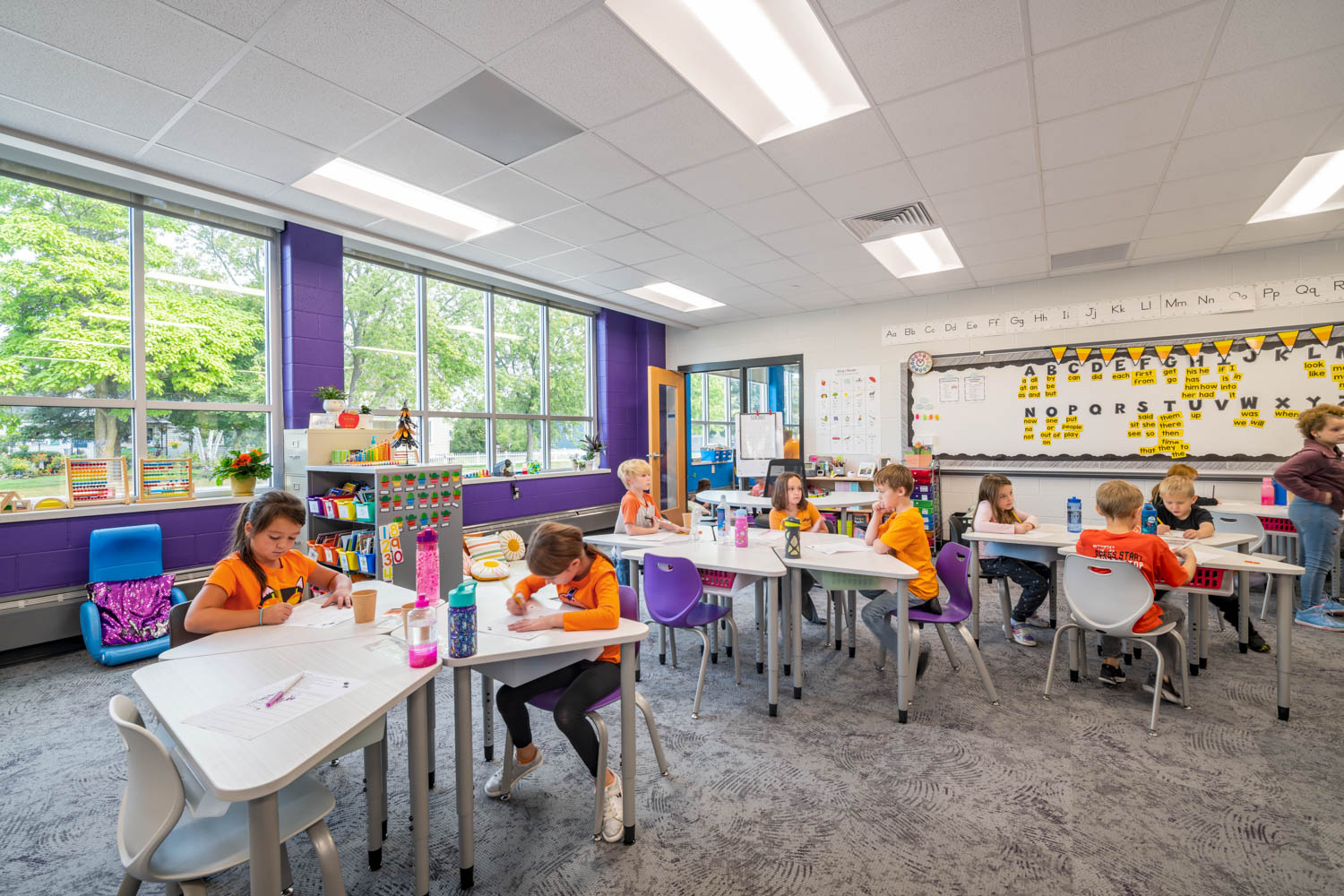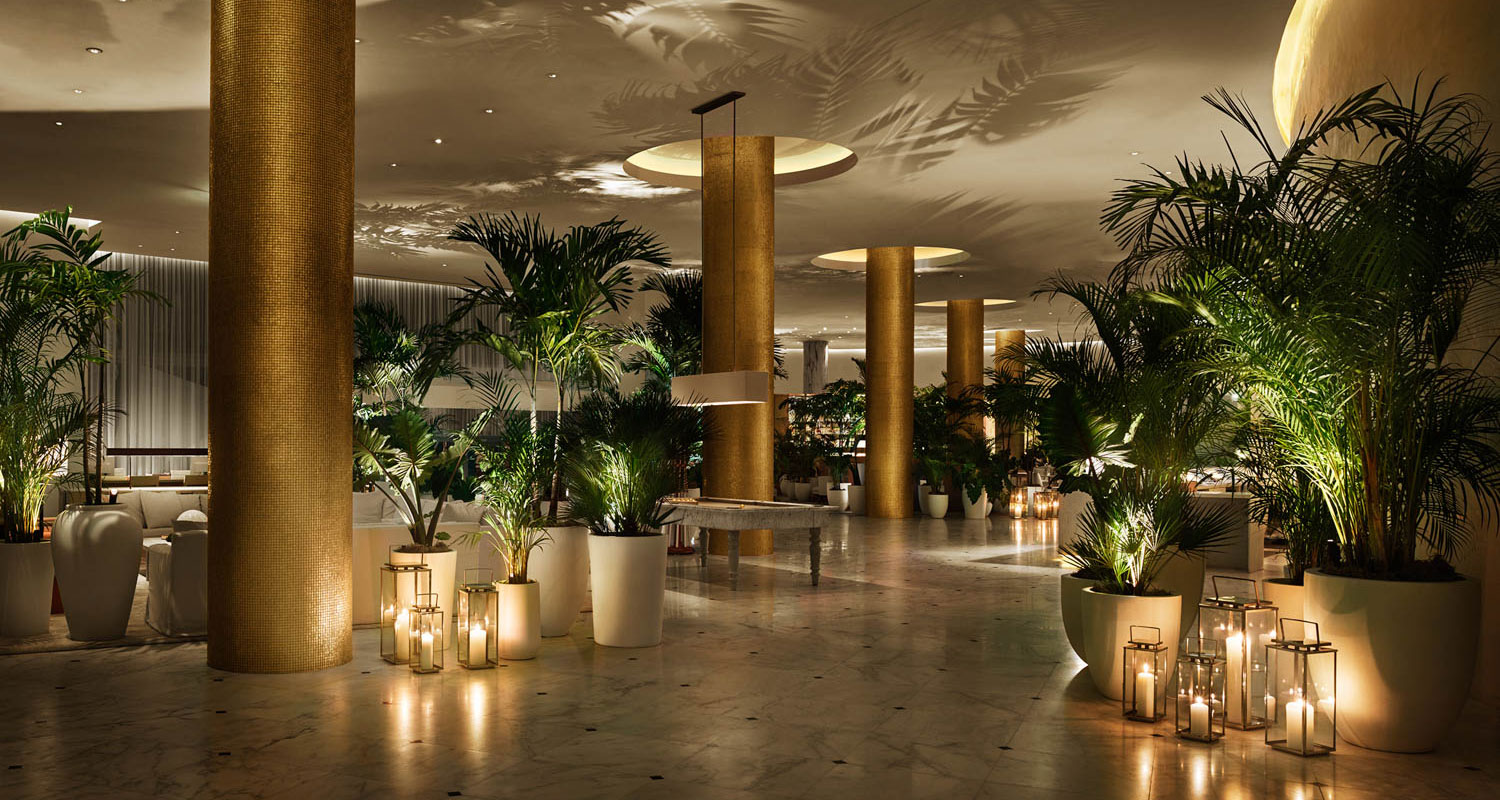10 Questions With… Lisa Simeone and Gina Deary
 In Detroit, a five-story neoclassical fire station becomes a 100-room hotel that honors local artists. Bas-reliefs by a trailblazing sculptor in Chicago wander throughout the luxurious Gwen Hotel, a Windy City boutique destination that boasts luxurious art deco interiors. Two European brands couple up in a gender-inspired Denver hotel. Such are the inventions of Simeone Deary Design Group, recent IIDA Interior Design winners (for that fire station transformation). Here, principals Lisa Simeone and Gina Deary discuss childhood bedroom makeovers, when to think locally, and the importance of honoring work by female designers.
In Detroit, a five-story neoclassical fire station becomes a 100-room hotel that honors local artists. Bas-reliefs by a trailblazing sculptor in Chicago wander throughout the luxurious Gwen Hotel, a Windy City boutique destination that boasts luxurious art deco interiors. Two European brands couple up in a gender-inspired Denver hotel. Such are the inventions of Simeone Deary Design Group, recent IIDA Interior Design winners (for that fire station transformation). Here, principals Lisa Simeone and Gina Deary discuss childhood bedroom makeovers, when to think locally, and the importance of honoring work by female designers.
Interior Design: What was the first object or area you really noticed the design of?
Lisa Simeone: I was obsessed with changing my room around as a child. I would spend most weekends moving the bed over here and the dresser over there. I loved the possibilities and the new perspective I gained just by making a few shifts.
ID: Did you have any mentors growing up? What did they teach you?
Gina Deary: My first job out of school was at Marve Cooper Design. He taught me the meaning and importance of a space being shaped—not decorated—and the power of artful interiors.
ID: What drew you to the hospitality sector?
LS: The temporary, transient community of a hotel or restaurant, how humans act and react to a space, how to craft an interior that’s more than the sum of its parts, how to move and compel guests to feel something… these are the questions and queries that drive and inspire me every day.
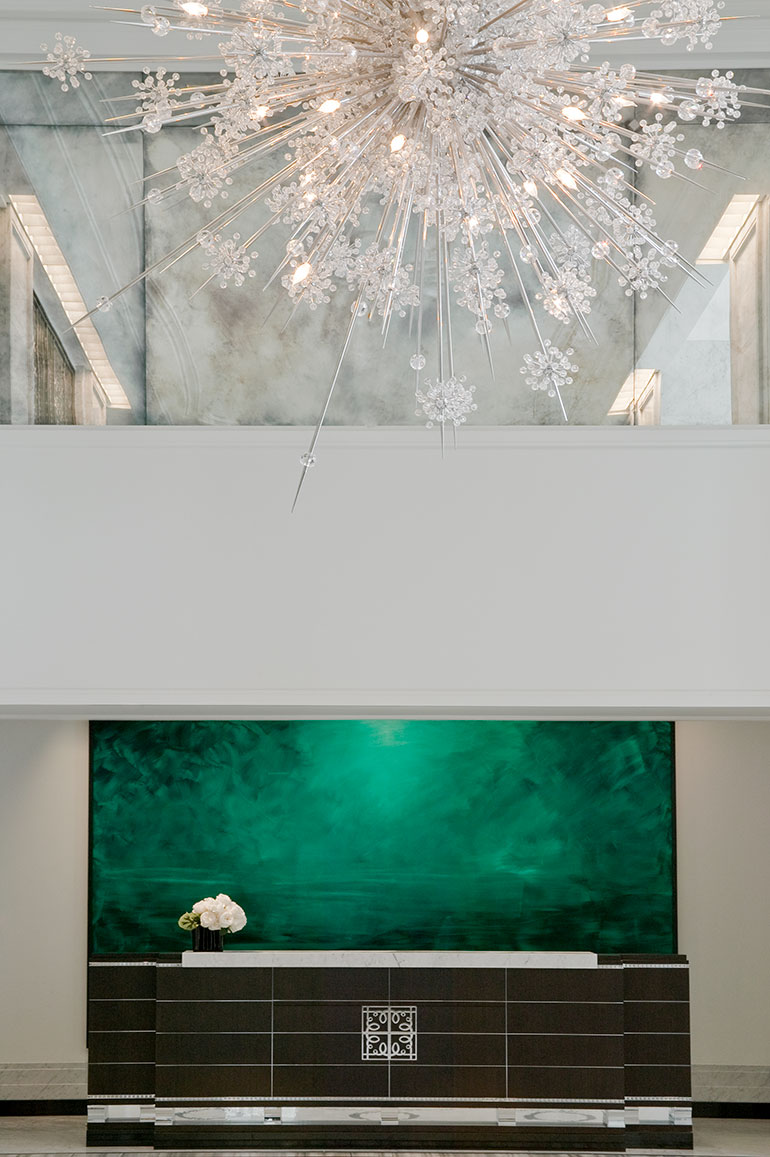
ID: What was the first project you felt was really successful?
LS: Chicago’s (former) Elysian hotel. Encouraged by a client who wanted to blur the edges and come out with a game-changing product, Gina and I were allowed to break the rules of hotel design. This paved the way for how we approach our projects today and is the foundation of our company platform.
ID: From a design perspective, do you approach working on a convention hotel differently than a boutique hotel?
LS: From a narrative perspective, I approach both convention hotels and boutique hotels the same way: Creating cohesive and multifaceted designs while simultaneously finding places to incorporate unexpected, experiential moments. Once this concept is established, one of the major differences comes into play via space planning. Moving large amounts of people through a space at the same time—such as when convention guests arrive in unison or return from a show together—is a different type of challenge than a smaller, intimate boutique hotel may experience with fewer guests.
ID: For the Gwen project, what inspired you to translate Gwen Lux’s fine art into interiors?
GD: Lux designed and crafted the mythological stone bas-relief sculptures on the façade of the historic building wherein the hotel is located. At that time, Chicago was an architectural powerhouse, albeit male-dominated. Understanding how significant a contribution Lux made not only to this building but to the city’s landscape inspired us to preserve and celebrate her work in our design.
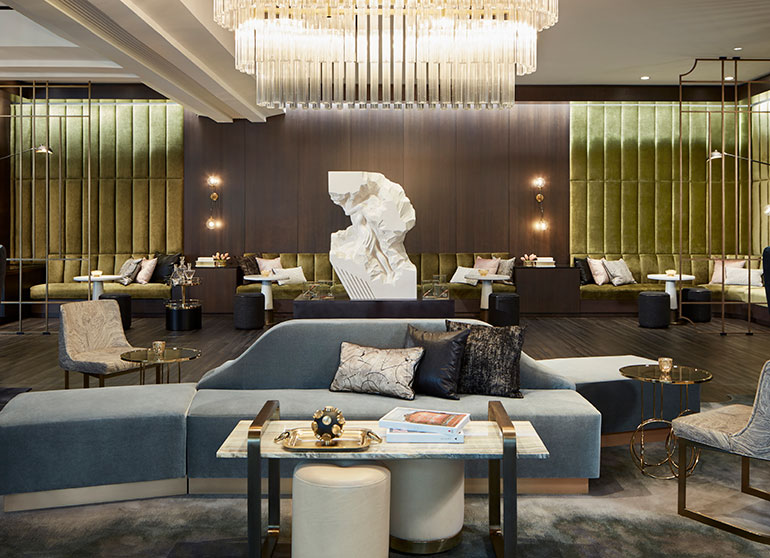
ID: The Detroit Foundation Hotel also incorporates work from fine artists. Why is it important to specifically include local creators?
GD: Detroit has a very strong creative community. This includes lighting designers, fabricators, sculptors, millworkers, and of course artists in the literal sense. Therefore, when we began conceptualizing the hotel’s design, we knew that the art and artists needed to be its main focus. Not all projects require this level of local involvement. There are even circumstances when we source artists from outside of the community, which is a great way to infuse interest in the hotel and inspire local makers to expand their body of work.
ID: For the London House Chicago, and a number of your projects, you are faced with a combination of adaptive reuse and new construction. How do you build in aesthetic continuity?
LS: There are instances when you want that pull through, and others that you want a pure juxtaposition of old and new without trying to incorporate any kind of continuity. For the London House, gorgeous, ornate, and intricate motifs and patterns were encrusted throughout. We didn’t want to lose them in the new building, so we embedded them into the marble floor, ceiling, wall-covering, molding, and in the mirror and metal behind the front desk. It’s a subliminal way of paying homage to the original, historic building without trying to recreate it.
ID: You’ve described the Le Meridien AC Hotel (LMAC) in Denver as a courtship between masculine and feminine styles. What was interesting to you in terms of conceptualizing through that lens?
GD: The LMAC Hotel is a dual brand. Both originate from Europe—Le Meridien being French, and AC being Spanish. We used a French woman as a muse for the Le Meridien and a Spanish man for the AC. We created personalities for the “man” and “woman” that reflected the brand’s specific tenets, Denver’s location, and each hotel’s target markets and demographics. To create this synergy, we imagined a passionate connection between the two muses and based our design decisions on the yin and yang of their relationship.

ID: What’s a dream commission?
GD: Something challenging and that requires thought and searching to create. Our work with Universal Studios is always inspiring—they are very open to us exploring fantastical ideas.
